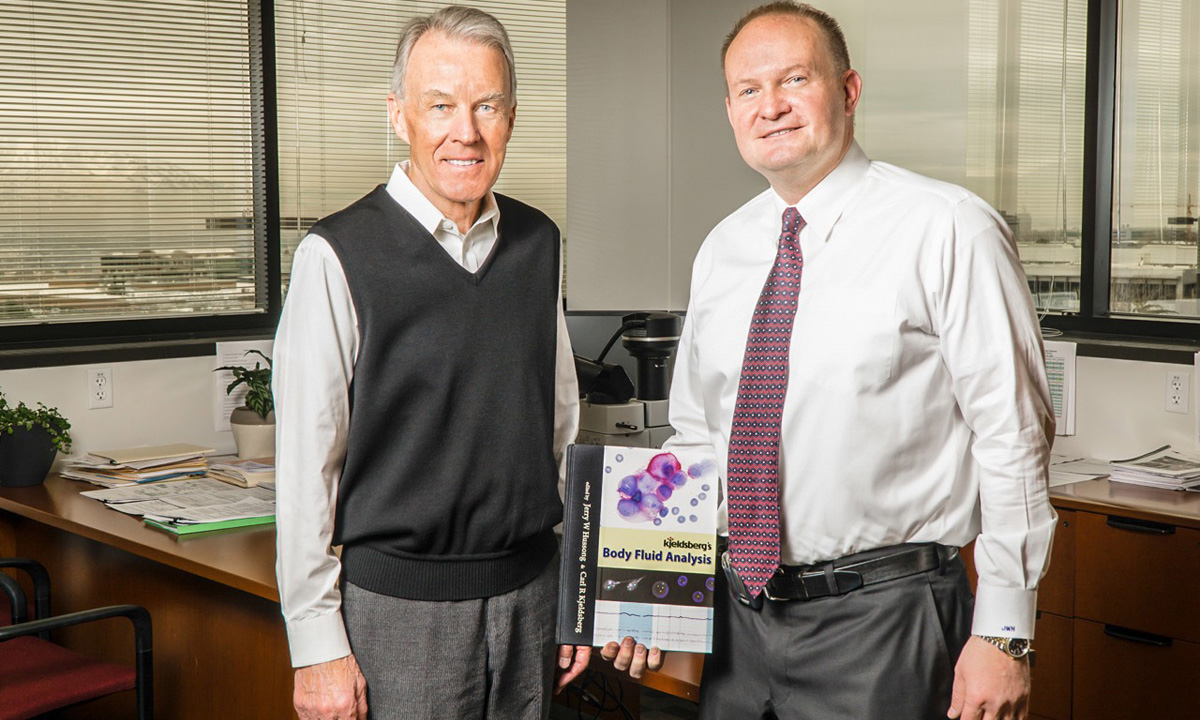
The go-to-book for body fluids, Kjeldsberg’s Body Fluid Analysis (4th edition) was recently updated and released by the American Society for Clinical Pathology Press (ASCP). It was co- edited by Jerry Hussong MD, DDS, MS, the chief medical officer at ARUP Laboratories, and Carl Kjeldsberg, MD, one of ARUP’s founders and the book’s original author, who is also the author of Practical Diagnosis of Hematologic Disorders.
While it has been one of the publishers bestselling books for years—sold worldwide and in an electronic version—it was long overdue for an update from the last edition, published in 1993 with Joseph Knight, MD as the co-author. People in the field were increasingly asking for an updated version.
“Areas have become so much more specialized since the last edition, so we needed to tap into all the different areas of expertise found among our faculty at ARUP and the University of Utah,” says Hussong. Each chapter is authored by a well-known expert in that specialty. ASCP has also published a companion piece titled Body Fluids Morphology Bench Guide.
In a simple, straightforward approach, the book discusses how to analyze different kinds of fluids (except blood) and includes new chapters covering urine and specialized body fluids, such as vitreous fluid and sweat. It was updated to match the new technologies (i.e., PCRs, NGS, mass spectrometry) and emphasizes the chemical evaluation of body fluids.
It is one of the few fluids book available that goes beyond morphology and features extensive new ancillary methods in cytogenetics, flow cytometry, IHC, and molecular analysis.
“We wanted to keep it a size and at a level that would appeal to a wide spectrum of people,” states Hussong. Avoiding an “encyclopedia” feel, the book is filled with cellular images taken by Kjeldsberg and, according to the publisher, provides “sufficient information for practical applications.”
Every chapter features lists of key points, artifacts, and pitfalls, with an entire chapter dedicated to specimen requirements, methodological techniques, tables of antibodies and antigens of diagnostic use, decision making, and use of methods.
The Birth of the Original Body Fluids Book
Early in the 1980s, technologists would come in and ask Kjeldsberg to take a look at a spinal, amniotic, or other kind of fluid specimen to help them understand what they were seeing. “So I’d go take a look and figure it out. I was doing this every day and was becoming a resource,” recalls Kjeldsberg.
One day, while looking through a microscope to determine whether cancer cells were present, the technologist standing next to him said, “Speak.”
Without looking up, Kjeldsberg asked, “Speak what?”
“Speak what you think, so I can learn,” commanded the technologist. Thus the idea for the book was borne.
The book’s contributors include: ARUP faculty Hussong JW, Kjeldsberg CR, Sorensen E, Perkins SL, Couturier MR, Grenache DG, Lamb AN, Straseski JA, and Cohen MB, as well as University of Utah and IVF & Andrology Laboratories faculty Carrell DT, Emery BR, Farley JD, and Shamsi MB.
By Peta Owens-Liston, ARUP Science Communications Writer
















